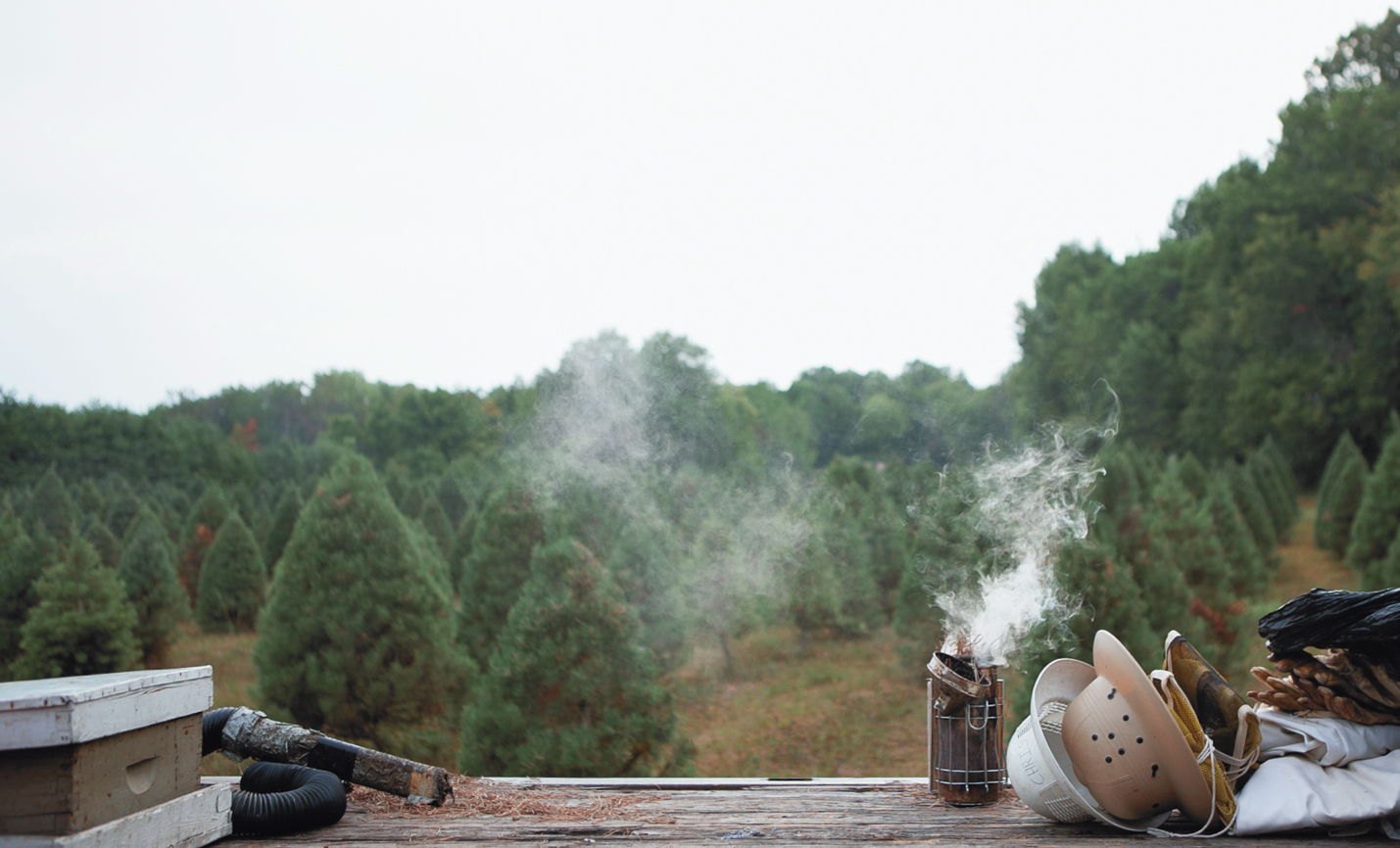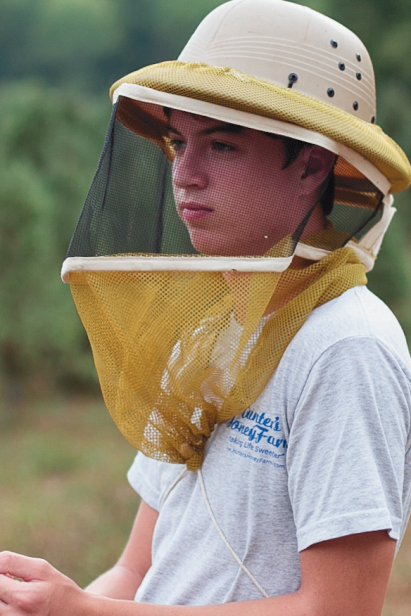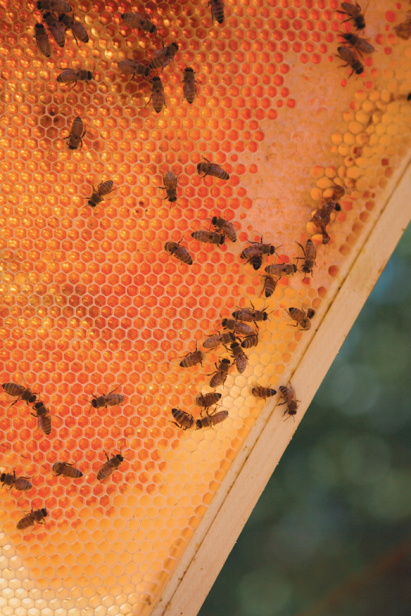Hive Minded at Hunter's Honey Farm
Tracy Hunter talks about bees with the enthusiasm of a kid. Which is appropriate, since that's what he was when he began keeping them.
A third-generation beekeeper, Hunter, 51, will tell you all about this "fantastic organism," from the health benefits of its honey, pollen and propolis – a resinous substance used to seal holes in hives – to the way it uses enzymes and flaps its wings to transform nectar into honey.
He began learning about bees as a boy, when he marveled at his grandfather's handling of the swarming insects. He got his first hive at age 14 and gradually grew his beekeeping business. In 1990, in the hills northwest of Martinsville, he opened Hunter's Honey Farm.
When he isn't teaching biology and environmental science at Indian Creek High School in Trafalgar, he's running the 75- acre farm, which sells an array of bee-related products onsite, at farmers' markets and through other retailers. He and his staff – including his wife, Christina; their 18-yearold son, Ross; and their 13-year-old daughter, Mackenzie – still follow the lessons his grandfather taught him.
"We're still processing our honey the same way he did 100 years ago," Hunter says.
BEES AND THEIR KEEPER
It begins with the bees. From April till September, the bees from Hunter's 500 or so hives gather nectar from flowers. Enzymes from the bees' honey stomachs break down the nectar's complex sugars into simple ones, and they store the nectar in the hive's honeycomb and fan their wings to evaporate most of the nectar's water.
Voilà: honey.
Each plant yields a different variety of honey – such as clover, alfalfa or black locust – with sweetness ranging from mild to robust. There are more than 300 varieties of honey in the United States, Hunter says, and his farm sells about a dozen kinds each year.
Some honey is produced on the farm, but most is made elsewhere. Hunter rents his hives to Hoosier farmers to pollinate their apples, watermelons and other crops, resulting in honey varieties like apple blossom and watermelon blossom. And when he spots a place he thinks will yield good honey, he negotiates with the landowner for his bees to visit.
All of the honey made by Hunter's bees is harvested the same way. Each hive has three to six boxes, or "supers," which each contain ten frames of honeycomb. After blowing the bees off the hive, Hunter and the other beekeepers take the supers to the farm's main building and put the frames into an extractor that spins the honey free.
To expand his varieties beyond Indiana plants, Hunter orders honey from beekeepers in other states. He gets tupelo and orange blossom from Florida, for example, and Spanish needle from Michigan. "Some of the beekeepers I've known all my life," Hunter says. "My grandpa worked with the father, and I work with the son."
Wherever the honey originates, Hunter merely strains the sweet, sticky liquid with cheesecloth to remove bits of bee and wax.
"Nothing's added," he says, "nothing's taken away."
Whereas other sweeteners have to be processed by humans, Hunter says, "Honey is made by nature."
He doesn't flash-heat or pressure-filter his honey as some producers do to prevent crystallization. Those processes destroy beneficial enzymes and remove propitious pollen grains, Hunter says.
SWEET STUFF
"It's endless what we can do with honey and the beeswax products," Hunter says. The farm's store is proof.
A smattering of what's for sale: several varieties of honey, in sizes from eight ounces to 60 pounds. Honey caramel puffs (a top seller). Beeswax candles. Honey barbecue, mustard and hot wing sauces. Beeswax furniture polish. Pollen. Honey dog treats. (Cat treats are coming soon.) Honey hand soap and honey butter developed by Hunter's daughter. There is even a honey-of-the-month club.
At Thr3e Wise Men Brewing Co., Hunter's clover honey adds flavor to the Centennial Martyr Double IPA.
The farm also offers Christmas trees and a variety of tours that let you bottle your own honey, for example, or make a beeswax candle.
Hunter isn't sure if his children will continue selling the products, trees and tours when he eventually stops, but for now, he's glad a fourth generation follows this tradition.
"We're working with wholesome products, and we can be together," he says. "It's a great way to raise a family."
WHERE TO FIND HUNTER'S HONEY
Hunter's honey and other products are sold at the Bloomington, Indianapolis and Carmel farmers' markets and at stores including Georgetown Market (GeorgetownMarket.com) and Adrian Orchards (AdrianOrchards.com) in Indianapolis, Bloomingfoods (Bloomingfoods.coop) in Bloomington and Double Oak Farm (2OakFarm.com) in Columbus. Order online at HuntersHoneyFarm.com.









